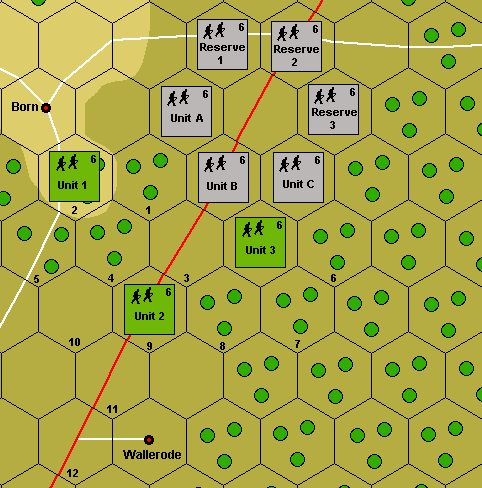 |
In the picture to the left the movement phase
has just ended and the battle phase is beginning. Each side must give
battle orders to their units.
The German orders are Unit A and Unit B will ATTACK Unit 2 while Unit C ATTACKS Unit 3. The units Reserve 1, 2, and 3 were designated reserve units during the movement phase. The American orders are for Unit 2 to DEFEND HEX and Unit 3 to DEFEND ALL. The results of these orders are that Unit A and B will attack into Unit 2's hex. If Unit C had not attacked unit 3 then, by virtue of it's DEFEND ALL command, unit 3 would have moved into unit 2's hex to aid in their defense. However, since Unit C did attack Unit 3 its DEFEND ALL command is canceled as it must defend its own hex first. |



